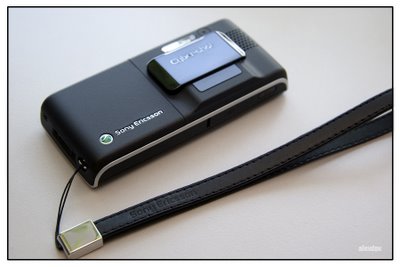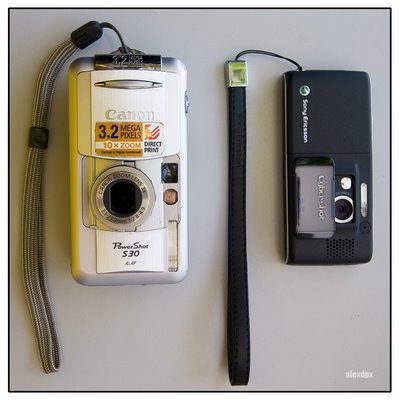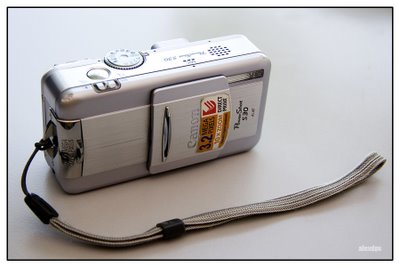3.2 Megapixels Shootout: Is the cameraphone ready to retire the compact digicam?
Cameraphones are now capable of producing 3 Mp pictures. The fact that that is good enough to produce quality 4 x 6 prints cannot be denied but just what does that mean, really? Are camera phones ready to retire the compact digicam?
I happen to have a 3.2 Mp Canon Powershot S30 which I bought in 2002. Back then, this was a pretty high-end compact with only the S40 and the G1 prosumer above it. Now, 4 years old, it's starting to show its age compared to todays current breed of compacts. However, the image quality is so good that it can still give contemporary models a run for their money. Like most Canon compacts, this is feature-packed with scene modes, and creative manual controls. It's even got manual focusing! (A noble attempt by Canon but otherwise useless here.) This was my main camera before I upgraded to an EOS 20D DSLR.
My 4 years old Canon Powershot S30. This has been my work horse and main camera until I upgraded to an EOS DSLR. It still looks good despite the battle scars. (Notice the dent on the upper corner, near the shutter button side.) Representing the compact digicams.
July 2006, the Sony Ericsson K800i Cyber-shot camera phone was introduced to the cellphone market boasting a 3.2 Mp integrated camera with autofocus and a xenon flash, similar to those fitted into compact digicams. Of course, cell phone manufacturers have already sold 3 Mp cameraphones ahead of Sony Ericsson - but - what grabs ones attention to the K800i is that it's carrying the badge of a major player in the compact digicam arena - Sony's Cyber-shot brand. It sends a message that this is no ordinary cameraphone and presents a challenge. It simply begs the question, "Is it really that good to deserve the Cyber-shot label?"
I bought one without the intention of replacing the Powershot. Like most people who cannot survive without a cellphone, I will die if I don't have a camera in my pocket. The nature of my job requires the need to have a camera everytime. The Powershot is not exactly pocket sized and the quality of pictures I get from my previous camera phones are not that much usable. The other reason is for the photo requirements I have for this blog. Carrying a DSLR, or even a digicam, anytime, anywhere is not always that practical. It just so happen that the K800i sports the same resolution as my old digicam - nothing more than a coincidence.

My barely 2 weeks old Sony Ericsson K800i Cyber-shot cameraphone. It belongs to the new breed of cameraphones sporting 3 Megapixels of resolution. Small, compact, pocket-sized and can do a thousand other things a digicam cannot. Representing the cameraphones.
And now, since I have both of them available, comparing them should not come as a surprise. Most people would compare them, although maybe few will bother to write about it and share it with everyone. Well, I did, basically to answer two questions that has been lingering in my mind:
Is my compact digicam really that old and ready to retire?
There is probably no point of trying to find out which one has more features and better ergonomics or which one offers better value because one is an apple and the other is an orange. These are two different gadgets. The S30 is a full-blooded digital camera built for the single purpose of taking digital pictures. The K800i is an all-in-one gadget, primarily a cell phone, which happens to have a very good camera function. While it can do a thousand other tricks that the S30 cannot, as a camera, it cannot beat the S30's user-interface, optical zoom, ISO settings, and creative manual controls.
So, on that note, I decided to restrict the comparison to image quality. For a fair comparison, I had the S30 to adapt to the K800i's limitations.
Testing Methods and Procedures
Both cameras have approximately the same 28mm (35mm equivalent) wide-angle lens. Since the K800i has no optical zoom, all shots where taken using both's widest focal length.
Both gadgets have scene modes but for practical reasons, I had them both shooting in Auto mode.
Various scenes were shot handheld for both gadgets from the same location, same spot,
approximately the same angle and with the same lighting condition.
Resulting photos are posted as they are. No sharpness, contrast or brightness adjustments made.
No scientific methods and measurement kind of things applied here. Just plain practical
shootout.

I think you'll find the results interesting. I will have them featured side by side in my next post. Until then.
Cheers,
alexdpx







0 Comments:
Post a Comment
<< Home